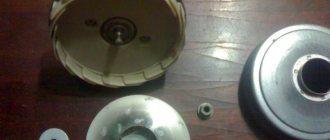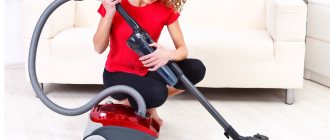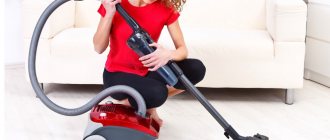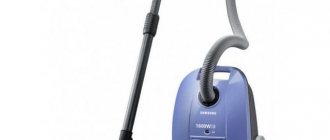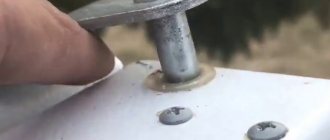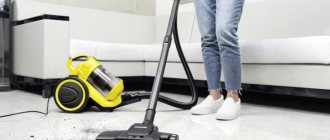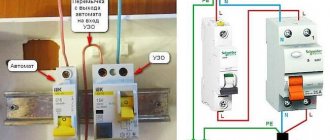Often when cleaning, the vacuum cleaner begins to suck air poorly and loses its ability to collect debris. The problem can usually be easily fixed by cleaning the filter. But if the lack of traction is due to a serious breakdown, the device will have to be disassembled. We'll tell you what to do if the vacuum cleaner doesn't suck well in this article.
Relevant for all popular brands and models of vacuum cleaners: Ariete, Dyson, Bork, Bosch, Bissell, Electrolux, Gorenje, Hoover, Karcher DS, WD ; Kirby / Kirby, LG Kompressor, Storm Extra / LG (LZh) Compressor, Storm Extra; Miele / Miele, Panasonic / Panasonic, Philips / Philips, Rowenta / Rowenta, Samsung Air Track / Samsung Air Track, Scarlett / Scarlet, STIHL / Shtil, Supra / Supra, Tefal / Tefal, Thomas Twin / Thomas Twin, UNIT / Unit, Vitek / Vitek, Zanussi / Zanussi, Zelmer Clarris, Solaris Twix / Zelmer Claris, Solaris Twix; Aggressor, Ural and others, including electric and vacuum cleaners with an aqua filter.
So, let's go!
The vacuum cleaner works, but does not suck up dust well and gets hot
There are few reasons why a vacuum cleaner suddenly stops working effectively. This mainly concerns clogged filters, the dust container, the hose and the pipe on which the brush is mounted. Less common are reasons related to purely technical problems, such as incorrect operation of the electric motor.
What to do if power drops
All of the above troubles necessarily lead to a drop in air suction. Accordingly, the power of the unit also decreases, that is, you can forget about cleanliness of cleaning. The vacuum cleaner works, but removes dust ineffectively.
The hostess senses this immediately and begins to get nervous. The first thing you need to do is touch the body of the device. If it gets very hot, this indicates that the motor is running under load. This should not be allowed, because the engine should not operate in this mode for a long time. It will simply burn out, which will lead to large financial costs. Or it may even lead to the failure of the entire vacuum cleaner, which will have to be replaced with a new one.
Therefore, if the housing has become hot, the unit must be turned off and not used until the cause of this situation is identified.
Checking filters
The device contains two filters, which directly affect the fact that the vacuum cleaner does not suck in dust well. The first filter is located in front of the engine. It must be pulled out and washed to completely remove debris.
What kind of lighting do you prefer?
Built-in Chandelier
Please note that you can only put the filter back in place after it is completely dry. Otherwise, the device will fail.
If the bag is empty, the filters have been cleaned, but the vacuum cleaner still does not suck in dust well, you need to move on to cleaning the components.
How to find the reason yourself
There is no need to take the vacuum cleaner to the specialist right away. There are several reasons that can easily be eliminated on your own. Let's look at them separately.
Checking the dust container and filters
The first thing to do is open the compartment where the dust collector is located.
Attention! Remember, as soon as the volume of the dust collector is filled by 2/3, the air flow that should pass through this part is blocked.
It is necessary to explain that the vacuum cleaner is designed like a ventilation system. That is, air is sucked in on one side and thrown out on the other. There are simply several parts and assemblies installed inside the device that stop and collect the sucked dust so that the sucked air does not pass back into the room being cleaned. Hence the rather stringent requirements for dust collectors.
If it is a bag, then it is made of dense filtration material folded in several layers. That is, air along with dust gets inside the bag and passes through it, leaving dust masses inside. 100% dust does not remain inside the bag, some of it leaks out because the air pressure is quite high. So, final cleaning is carried out by special filters installed along the direction of air movement.
And since after the dust collection compartment there is a section with an electric motor, it is important to protect the latter from the smallest particles of dirt. The thing is that, although the motor has a level of protection, dust does its negative work over time. Therefore, vacuum cleaner manufacturers install several filtration barriers using high-quality filtration materials.
It is these filters that, when clogged, do not allow air flow to pass through them well. Therefore, the vacuum cleaner does not suck as expected. This means that filters need to be cleaned periodically. This is done manually using a brush. You can do it without it - by cleaning the filtration element with your hands or another object, or by tapping.
As for the bag, it is simply emptied of its contents and shaken out well. And it is again ready to collect small debris and dust, plus delay the latter from penetrating into the engine compartment.
Some manufacturers supply vacuum cleaners with paper bags rather than fabric ones. They perform the same functions, but there is no point in cleaning them. They are simply thrown into the trash, installing a new one in the compartment.
The frequency of cleaning filter bags depends on the intensity of use of the vacuum cleaner. The more we use, the more often we clean.
Plastic containers
Vacuum cleaning bags are gradually disappearing into oblivion. They have been replaced by plastic containers that operate on the principle of a cyclone. That is, inside this dust collector, when the motor is turned on, an air funnel is formed, in which all the dust collects. As soon as the electric motor turns off, it immediately falls to the bottom of the container.
A plastic container installed instead of a bag has made life easier for housewives, because garbage disposal is much easier here:
- the lid opens;
- contents spill out;
- The internal surfaces are wiped with a damp cloth; the plastic container can even be washed.
Aqua filters
This is a plastic container into which water is poured, which acts as a filter. It is believed that the vacuum cleaner does not work due to water contamination. This is mistake. And although dirty fluid has to be replaced with a new one often, this still does not affect the suction power in any way. This vacuum cleaner will work efficiently. The only thing is that you will have to look out for additional filters.
But such models of vacuum cleaners have one feature. The water filter must be filled with a certain volume of water. That is, no more and no less, which is why there is a fill level on the container. The fact is that when air moves at great speed, it also takes water dust with it. But the air inside the device performs an important function - it cools the motor. If water gets into the air mass, this will soon affect the operation of the electric motor. It’s not uncommon for the engine to simply “burn out.”
Inspection of components
The vacuum cleaner kit includes various attachments for collecting dust, a hose and a metal tube connecting these two parts. All this can cause incorrect operation of the household appliance.
- A large object may get inside and block one of the components. For example, it could be a banal rag. It must be removed by any means. You can use a metal rod for this. It is better to remove the object from the nozzles with a stiff wire, making a hook at its end.
- The second reason why the vacuum cleaner does not suck up dust is damage to the hose. It could even be a small gap: transverse or longitudinal. This is enough to reduce the suction power.
- There is a specially installed opening on the metal pipe, which is tightly closed by the lid moving along it. Its purpose is to manually reduce the pressure inside the suction system without touching the speed switch on the device body. Over time, the seal of the lid weakens and air begins to leak through the gaps. This reduces power.
You can easily determine that one of these components is faulty:
- The vacuum cleaner turns on with the components connected.
- with disconnected.
If in the second case the device works better, and this will be audible, then it’s all about three elements. If no changes have occurred, then you need to look for another reason.
Possible engine malfunctions
Problems with the electric motor are rare. They usually appear after using the vacuum cleaner for a long time. Here are some of them:
- A whistle appeared inside the case, the device itself began to operate noisily. The reason is something happened to the motor bearings. More often the lubricant dries out.
- When plugged in, the engine did not start. If the power light does not come on, there is a problem with the plug or power cord. Or the fuses have blown. If the power light is on, but the motor does not turn on, then there are two reasons: something with the control board, something with the engine itself. The most dangerous thing is if it burns out.
- Sometimes the vacuum cleaner turns off by itself, but the power light is on. It was the engine overheating system that triggered. You just need to leave the device turned off for a few minutes. Then it will turn on again.
- The light is on, but it does not turn on. The switch may be to blame.
- The same can be said about the speed selector.
- If the engine starts to hum. In this case, no absorption occurs. The reason is that the graphite brushes inside the motor have worn out. They are replaced with new ones.
- Smells like burnt rubber. There are two reasons: problems with the plug and power cord, problems with the electric motor winding.
- The vacuum cleaner operates jerkily. It's all about the control board.
- No malfunctions were detected, but the vacuum cleaner stopped suction - what to do in this case. Option one is to check the voltage in the network. Any household appliance, including a vacuum cleaner, has precise voltage readings at which they operate correctly. Usually it is 220 volts, plus or minus 10 V.
Mechanical damage
If the first 2 options do not help, the device must be checked for mechanical damage. The most common ones are:
- Damage to the corrugated brush hose. It may break during prolonged use. In this case, it can be temporarily repaired using electrical tape.
- Damage to the mechanism for attaching the hose to the vacuum cleaner body. There are also cases when it is simply not fully inserted.
- The brush mechanism itself is clogged or the bearing is worn out, resulting in difficulty rotating the brush.
- The hose is clogged with large debris from the inside.
Ways to solve problems
Having considered why vacuum cleaners have poor suction and heat, it is worth familiarizing yourself with the solution to these problems.
Everything related to the electric motor cannot be repaired on your own. This requires specialist intervention. Vacuum cleaner manufacturers are trying to improve product quality by installing high-quality components and parts. And if they fail, then more often than not they have served their time. Therefore, there is no point in repairing them. In workshops they are simply replaced with new ones.
A burnt-out motor winding can be replaced, but this still reduces the quality of the motor. Therefore, experts recommend changing it or purchasing a new vacuum cleaner. The winding burns out for four reasons:
- the bearings sagged, which caused the rotating rotor to sag, so it began to touch the stator winding, abrading it and removing the insulation;
- overheating of the winding, which causes the insulating layer to burn out;
- the collector becomes clogged;
- Water got on the winding.
Problems with liquids often arise. If the vacuum cleaner is not washable and does not have an aqua filter, then it cannot collect spilled liquids. Especially if there is a paper bag installed inside the vacuum cleaner. With any protection, even a small volume of water will penetrate inside the motor and reduce its service life.
Troubleshooting the board is possible, but only in a workshop. Here you have to look for an element that has burned out or stopped functioning due to the end of its service life. It is usually changed. It is rare that the entire plateau has to be removed. But this also happens.
If the voltage in the house is low, then the solution is simple - install a step-up transformer.
Cleaning the filter
The answer to the question why the vacuum cleaner has stopped collecting debris but remains on may be a faulty filter. Namely, its contamination. Checking the cleanliness of the HEPA exhaust filter and the fine filter, which is located in front of the motor and attached to the back of the housing, can seriously clarify the situation.
If there are clogs in the fine filter, it must be rinsed with water, dried, or completely replaced. It all depends on the type of material. The HEPA filter must be changed after every 50 hours of continuous operation of the equipment, which will allow you to maintain the functionality of the vacuum cleaner at any time.
Useful tips
The service life of a vacuum cleaner is affected by various parameters. Of course, first of all, a lot depends on the quality of production: high-quality components and parts, as well as their assembly into a single whole. Not all manufacturers can guarantee high quality assembly, and then there are more details themselves. But even such vacuum cleaners can work for several years without creating problems.
It is important to consider the following requirements:
- If the instructions for the device indicate the time that the vacuum cleaner should work without stopping, then it should not be exceeded.
- The dust container and other filters must be cleaned in a timely manner.
- During operation, you need to make sure that the hose does not twist. You shouldn’t carry the equipment by the hose; there’s a handle for that.
- Store the vacuum cleaner in a dry place.
- If these are ordinary models, then you cannot use them in wet rooms, and even more so, do not collect spilled liquids with them.
- The electric motor must not be allowed to overheat. To do this, it is enough to periodically touch the body with your hand.
- Use the unit carefully. Strong mechanical loads, especially shock, are not for him.
- Use different attachments in different situations. Particular attention should be paid to brushes, which wear out over time, making the cleaning process not as good as required.
- Some attachments have rotating rollers. When they jam, the dust collection process also becomes ineffective. Usually hair is wound onto rollers. So you have to remove them manually.
- Pay special attention to the start and stop button. You need to press it smoothly, no kicking. The same applies to the suction speed switching unit.
There is an enviable variety of vacuum cleaners on the market. There are inexpensive models, and there are premium ones. But they all have the same problem if the device is not used correctly. This is a drop in the efficiency of collecting dust and small debris, after which house cleaning cannot be called clean. Small problems can be solved independently, but there are some that require the intervention of a specialist. But, if you strictly follow the operating instructions from the manufacturer, you can guarantee that the device will work for a long time and without problems.
